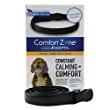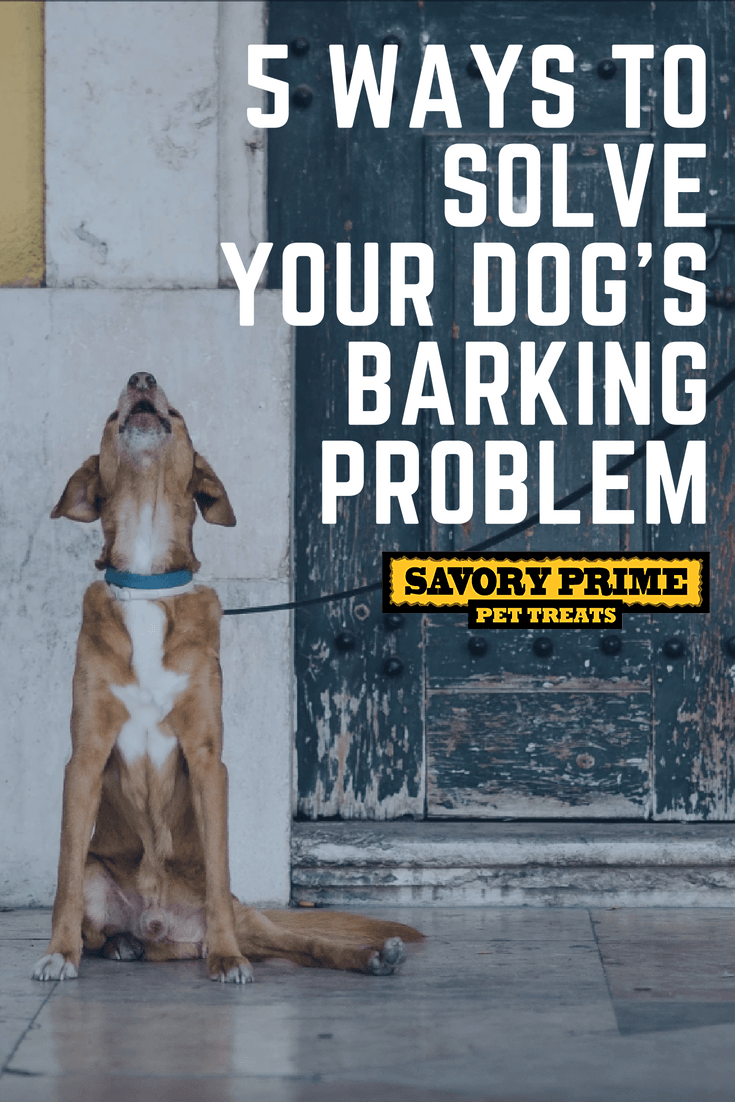A dog barking is completely natural to them, and it’s unreasonable for us as owners to expect our dogs to never bark. We may not always appreciate or understand it, but barking is the way dogs communicate their feelings to each other and to the world. That, however, does not mean that excessive dog barking problem should be accepted, and there are ways to deal with it.
Dogs bark for various reasons, therefore the first thing to do is to figure out why your dog barks at what you might consider being the most inappropriate times. Once you know the reason behind the uncontrollable barking, you can start to treat the problem at its core.
Why Dogs Bark
There may be a hundred reasons why you now have to deal with a dog barking problem, but the most common are these:
1. Territorial/Protective Barking
When your dog sees or hears something in an area what he’s likely to consider his territory, excessive barking will often be triggered. Your dog will look alert and even aggressive during this type of barking and the barking will often get louder and more rapid as the threat gets closer. Note that this type of dog barking problem is often motivated by fear or a perceived threat into the canine’s territory (or the dog’s human).
2. Alarm/Fear Bark
Uncontrolled barking might be triggered by a noise or object that catches your pet’s attention and startles him. This can happen anywhere and not just at home. If it does happen at home it could possibly be part of territorial or protective barking discussed above.
3. Greeting/Play Barking
Your pet likes to greet you after not seeing you for a while. This can lead to excessive dog barking problem. It’s usually a happy bark, accompanied with a wagging tail and sometimes even jumping or whining. This is one of the areas where owners, without being aware, reward their dog for their unwanted behavior. More on this later.
4. Attention Seeking Bark
Your dog will bark when he wants something, be it food, water, or your attention. There could be a hundred reasons why the dog is seeking your attention. Some breeds are more attention-seeking than others.
5. Boredom/Loneliness Bark
We all know dogs are pack animals and when left alone for long periods they can become bored or sad. The lack of mental stimulation will cause them to either alert you of their discomfort or amuse themselves, which leads to your dog barking problem.
6. Separation Anxiety Barking
Dogs barking excessively when left alone might not just be lonely or bored but suffer from severe separation anxiety. They often times exhibit other symptoms such as pacing, destructiveness, depression and might even defecate in places they know they are not allowed to. This is one of the very common reasons for a dog barking problem.
7. Compulsive Barking
Compulsive barkers bark just to hear the sound of their own voices. As with dogs suffering from separation anxiety, they will often make repetitive movements, such as running in circles or pacing along a fence. Both separation anxiety and compulsive barking are difficult to treat and the help of a canine behaviorist should be considered. Medication might also be used to help them cope, or while they learn more acceptable behavior.
8. Medical Conditions
Other medical problems can also cause excessive barking in dogs. For example, a brain disease or a dog who is in chronic pain. While generally, most pets suffer silently in pain, a few may express their discomfort through occasional barking. Older pets may also develop a form of canine senility (dog dementia) that could cause uncontrollable barking.
Have your pet checked by a veterinarian to rule out any medical conditions as reasons for excessive vocalizations and if none are spotted, then it’s time to deal with a dog barking problem through fixing your pet’s behavioral habits.
5 Ways to Solve Dog Barking Problem
Once you’ve figured out the possible reasons your dog is barking, you can start utilizing some techniques to solve the dog barking problem. Getting your excessive barker dog to bark less will take time and effort. Realize that it won’t happen overnight but luckily you have several tools at your disposable.
1. Use sight barriers
The easiest and quickest way to solve a dog barking problem and quiet down your pooch who’s a territorial/alarm/defense barker is to manage his environment. By blocking your dog’s sight-line to potential barking triggers, you can stop the uncontrollable barking.
To block the views to neighboring yards or the street, you can use privacy fencing or privacy hedges. This will not only bark-proof your yard but also make your home look more attractive!
Inside your home, you can simply close your blinds or install a removable plastic film that makes windows opaque to obscure your dog’s view. Be sure to place the window film a few inches above your dog’s line of sight. You can also buy a spray-on glass coating.
2. A doggy quiet zone
If your dogs suffer from separation anxiety, set up a safe and quiet place for them when you aren’t home. Choose a room in your home that is away from the front door and with limited distractions from the outside world. This can be a back bedroom, laundry room or spare space. You can either create a barrier with a pet gate for the doggy quite zone, or you can include a dog crate with comfortable bedding and a privacy cover in a room.
Other helpful tools to help with this are:
- Toys: Separation barkers benefits from having something to do when you leave the house. A hard rubber dog toy that dispenses treats is a great way to keep them happy, and their mouth busy with something other than barking. Just be careful that the toy is big enough not to be a choking hazard.
- White noise machine: This machine masks exterior noises that might trigger excessive barking in dogs, and it can even produce soothing sounds for your Fido. They are fairly affordable, like this one from Marpac, and can be extremely effective.
- Pheromone-based treatment: Diffusers mimic the “calming pheromones” given off by female dogs and will help soothe dogs that bark due to the stress. You might not see a dramatic shift in behavior but keep in mind that the chemicals are milder than medication, but are an easy and affordable way to take the edge off.
3. Bark control gear
With technological advances, it is now possible to tech out your house to make you and your dog’s life easier when it comes to solving dog barking problem.
Ultrasonic anti-bark birdhouse

Citronella spray collar

Stress-reducing collar

ThunderShirt Anxiety Vest

The above is not a comprehensive list of tools for solving dog barking problems, and you are likely to find various other products to help you stop your dog’s excessive barking. You can find more options among the most ranked most effective dog calming collars, and for specific situations, you may consider anti-anxiety meds or other anxiety vests. These options are the most humane ways to solve excessive barking in dogs.
Controversial options
There are more effective ways to deal with a dog barking problem; however, they are considered controversial and the opinion is split on whether pet owners should use them. One such option is using anti-bark dog collars that emit a quick, low-level burst of electric shock to discourage the dog from barking. There are dog trainers and canine experts that support the use of these devices, and others who strongly discourage them.
Another option that some dog owners use is debarking their dogs (devocalization, bark softening), but this one is an even more controversial method which does not address the underlying cause of the barking in the dog, and might even be considered animal cruelty. It is a surgical procedure where the voice box is removed, leaving dogs with a raspy voice, instead of full bark. Other than the unethical aspect of the procedure itself, there are also possible complications and the operation can be life-threatening.
4. Bark training
You can work with a trainer to practice desensitization techniques with your dog. It will help your pet become accustomed to barking triggers and ultimately solve the dog barking problem. Remember that dog training takes consistency and patience, but the long-term rewards are worth it.
Here are a few key commands that can help control barking:
Recall: This is perfect to call your dog away from any barking triggers like the doorbell ringing. One of the essential commands for a dog.
Speak: This makes no sense, right? You want your dog to stop barking! Actually, training your dog to bark on command can help teach them when NOT to bark.
Quiet: Combined with ‘speak’, you can take complete control of your dog’s vocalizations. Teaching your dog “quiet” will help them to calm down on cue.
Sit/stay: The very basic and well-known, this command is useful to keep your dog occupied when a barking trigger is nearby.
5. A lot of Exercise

Final Do’s and Don’ts
Here are a few tips on what not to do in your efforts to end your dog’s excessive barking:
- Don’t yell. Speak calmly and firmly. Shouting stimulates your dog to bark more as he thinks you are joining in.
- Yelling “shut up” or “quiet” won’t mean a thing to your dog unless you have trained him/her to know what it means.
- Be consistent. Encouraging your dog to bark at the door bell but reprimanding him when he barks at strangers at the door is only confusing him.
- Don’t muzzle your dog to keep them quiet for long periods of time when they are alone. It can be dangerous to your pet. Your dog regulates his temperature through the mouth by panting and a muzzles prevents your dog from doing this, as well as drinking water and eating.
- Don’t punish your dog if he is barking due to fright or separation anxiety. You will most likely increase his anxiety, and therefore, his barking.
- Do not intensify your dog’s barking by acting excited when you get home. It is best to ignore your dog until he/she calms down and then calmly say hello.
Recent Pet Posts
Blog Categories
Product categories
- Accessories (7)
- Chicken & Veggie Wraps (8)
- Grillers Jerky Tenders (4)
- Jerky Treats (10)
- Made in the USA (9)
- Non-Rawhide Treats (28)
- Beggar Bone (11)
- Bully Sticks (4)
- Butcher Bone (4)
- Cod Skin Fish Treats (3)
- Pork Skin Twists (2)
- Pressed Rawhide Bones & Rolls (16)
- Bones & Rolls (6)
- Pressed Rawhide Bulk (6)
- Twist Sticks (4)
- Savory Munchies (13)
- Supreme Bones & Rolls (48)
- American Rawhide Bulk (16)
- Rawhide Bones (14)
- Rawhide Chips (6)
- Rawhide Rolls & Sticks (12)
- Uncategorized (8)



